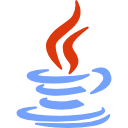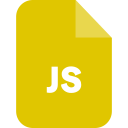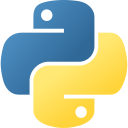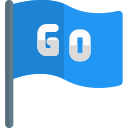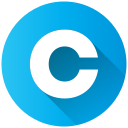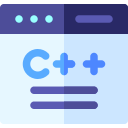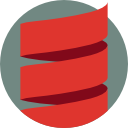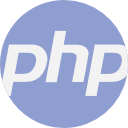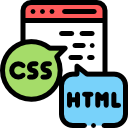It depends on your goals. If you’re a beginner aiming for a user-friendly introduction to programming, go for Python. If you’re interested in understanding computers at a deeper level, such as for systems programming, start with C.
Table of Contents
What’s the best programming language to learn first?
As a beginner programmer, it’s difficult to decide which programming language to learn first. The software development industry is fast-paced, and the market is constantly changing. There are over 700 programming languages in use. Each of those languages has its own advantages, disadvantages, and use cases. As a beginner, choosing the best programming language to learn first is crucial, and that is why this decision needs to be made with caution and in-depth research.
So, how do you decide where to begin?
Well, the good news is that learning any language will open up doors and create new opportunities for you. In this article, we’ll explore the different types of programming languages, along with how to choose the best first language for your personal and professional goals. Then, we’ll give an overview of some of the most popular languages in use today.
Let’s get started!
We’ll cover:
Learn to code today.#
Try one of our courses on programming fundamentals:
Different types of programming#
Programming languages are used to connect instructions to computers or machines. There are so many different programming languages with different functions. These languages can be categorized based on their functionalities. Popular programming language types include:
High-level#
High-level programming languages have strong abstractions from the details of the computer. High-level languages are considered easier to understand and learn because they typically use simple syntax, have better readability, and automate areas of computing systems to make programming easier.
Low-level#
Low-level programming languages have little to no abstraction from the instruction set architecture of a computer. These languages are typically described as “closer to the hardware.” They can convert to machine code without an interpreter or compiler. They’re considered to have a steeper learning curve than high-level languages.
General-purpose#
General-purpose programming languages are designed to build software in a variety of application domains. These languages lack special features for particular domains.
Scripting#
Scripting languages are programming languages that are interpreted. They’re typically interpreted at runtime rather than compiled. They use a series of commands that can be executed without being compiled. All scripting languages are programming languages, but not all programming languages are scripting languages.
Imperative#
Imperative programming uses statements to change the state of a program. Imperative programs give commands to the computer to execute. It focuses on explaining how programs operate. Imperative languages can be broken down into the following subcategories:
-
Procedural: Procedural programming languages are based on the concept of procedural calls. These languages follow and carry out a set of ordered steps.
-
Object-oriented: Object-oriented programming languages are based on the concept of objects, which contain data or code. Object-oriented programs are created by objects that interact with each other.
-
Parallel: Parallel programming languages carry out processes simultaneously. With parallel programming, tasks are typically broken down into several sub-tasks that can be executed independently with all of the results combined afterward. Parallel programming is closely related to and frequently used alongside concurrent programming.
Declarative#
Declarative programming is typically defined as “any style of programming that is not imperative.” Declarative programs are non-imperative and describe their desired results without clearly defining commands or steps to be executed. They describe what the program must accomplish, rather than how to accomplish it. Declarative languages can be broken down into the following subcategories:
-
Logic: Logic programming languages are based on formal logic. Logical programs consist of a set of sentences in a logical order that expresses facts and rules about problem domains.
-
Functional: Functional programming languages apply and compose functions. Function definitions are trees of expressions that map values to other values. In functional programming, functions can be bound to names, passed as arguments, and returned from other functions.
-
Database: Database programming languages define and access database information. With database programs, we can control access to data, define and update data, and search for information within our database management system (DBMS).
Choosing the right programming language#
There are a few things to take into consideration when choosing a language to learn or even when deciding on which language to use for a new project. The first essential question to ask yourself is: what am I learning a programming language for?
Are you interested in getting into programming? Are you wanting to learn to code as a hobby or just for fun? Are you trying to switch career paths? Do you want to build a website from the ground up? Do you want to design your own mobile application? Do you want to learn the most in-demand, popular language on the market? The questions are endless!
In short, your personal reasons for learning a language will help guide which language is best for you to learn.
Let’s break down some languages and their popular uses:
If you want to create a mobile application, learn Kotlin or Swift.
If you want to master web development, learn HTML, CSS, and JavaScript.
If you’re looking to become a full-stack developer, learn Python or Ruby.
If you want to create an e-commerce website, learn PHP.
If you want to start with an easy programming language, learn Python.
Can I choose the wrong programming language?#
At the end of the day, learning any programming language will teach you valuable and transferable skills in the software industry. While all programming languages have their differences, they share similar underlying principles. With any language, you’ll learn more about fundamental programming concepts, computer science, hardware, software, etc.
It’s also important to remember that you can learn multiple programming languages. Many developers move between different languages throughout the course of their careers. If you end up not aligning with your first language, you can always move on to another one. Once you learn your first language, it’s typically a lot easier to learn another one. Don’t stress yourself out when trying to pick your first language.
That being said, it’s important to consider what your goals are and what you’re working on when choosing a language. For example, if you want to build an iOS application, a good language option would be Swift, if you want to program a website, you’d want to learn languages like HTML and CSS, and so on.
Learn to code today.#
Try one of our courses on programming fundamentals:
What’s the best programming language to learn first?#
In this section, we’ll explore a compilation of some of the most popular programming languages to help you get an idea of what language would be best suited for you and your needs.
Java#
Java is a general-purpose, object-oriented, high-level programming language. It’s commonly used as the server-side language for back-end development tasks, including Android application development, big data applications, mobile app development, game development, and more. It’s a relatively simple language that uses automatic memory allocation and garbage collection. It offers class-based object-oriented programming (OOP) and enables reusable code. Java is platform-independent and multi-threaded.
This Skill Path begins with Java basics and explores topics like object-oriented programming and data structures. Next, you’ll cover Java programming, including core concepts and object-oriented principles. Finally, you’ll learn about algorithms, databases, REST API automation, and software quality assurance. The Skill Path concludes with practical projects and coding challenges to prepare you for a programming career.
JavaScript#
JavaScript is an interpreted, object-oriented, high-level language. Unlike Java, it’s not class-based. JavaScript is widely used in front-end web development alongside HTML and CSS to build dynamic web pages. JavaScript is a very fast language because it can be run in the client-side browser. It’s known for its simple syntax and rich libraries, frameworks, and technologies, including React, Angular, and Node.js.
JavaScript is a popular, in-demand, and widely used programming language today because of its simple syntax, modular nature, and ability to support all modern browsers. This path is perfect for you if you are new to programming. The path will teach you real-world problem-solving techniques and how to write step-by-step solutions in JavaScript. You will start by covering JavaScript's basic syntax and functionality to create basic programs. In the latter half, you will get a detailed overview of object-oriented programming to create scalable, modular, and cleaner code. Moreover, you will get hands-on experience practicing the implementations of commonly used data structures in JavaScript. Finally, you build a Tetris game step by step using modern JavaScript. By the end of this path, you will be able to write real-world programs in JavaScript and start your career as a JavaScript developer.
Python#
Python is an interpreted, object-oriented, high-level scripting language. It’s widely used in artificial intelligence, machine learning, data science and data analysis, and web development. Python provides rich libraries that include features such as web services tools, operating system interfaces, and more. These features add a lot of functionality to the language, which is one of the reasons why Python is so popular. Many developers recommend that beginner coders learn Python as their first programming language because of its simple syntax, readability, and extensivity.
Launch your developer career by mastering the skills needed to become a Python programmer. Our structured lessons will guide you from writing your first line of code to landing your first job as a Python developer. With our interactive content, you’ll learn to code and explore Python beginner projects, tackle Python coding interview questions, and understand key topics such as OOP in Python, data structures in Python, and popular Python libraries. Whether you’re looking for Python programming examples or preparing for Python interview questions, this module offers everything you need to confidently enter the tech industry.
Swift#
Swift is an open-source, multi-paradigm language developed by Apple. It’s mainly used for iOS development and macOS development. It integrates Objective-C’s object-oriented model and includes a framework infrastructure, debugger, and an advanced compiler. Swift is known for its simple syntax, scalability, and safety features. Your Swift projects can be extended with new features whenever necessary, which makes them easy to scale.
Golang#
Golang, or Go, is an open-source, general-purpose, and compiled programming language created by Google. It’s a statically-typed and imperative language that includes features of object-oriented programming. Go is hybrid, using the best features of many languages in a clear, expressive way. It’s used for all different types of software development solutions.
Go (also called Golang) is an open-source programming language featuring a robust standard library, package management, static typing, testing support, and platform independence. This path will guide you through both basic and advanced concepts of Go, including Go error handling, Go structs, Go methods, and Go interfaces. You'll explore the core concepts of concurrency in Go, including Goroutines and Go channels, while engaging in brain teasers and puzzle problems to enhance your critical thinking and problem-solving skills. By the end of this path, you'll be well-equipped as a Go programmer to create efficient Go applications and build complete web applications.
C#
The C programming language is general-purpose, imperative, and procedural. It’s widely used for scripting system apps and Windows, UNIX, and Linux operating systems. It’s also used for embedded systems, desktop applications, browsers, and databases. C is a low-level language, so it’s “closer to the hardware.” C is a base language for many other languages, so learning it will help you learn and understand other languages.
C++#
C++ is a general-purpose, generic, object-oriented language. Its portability allows you to easily run your programs on any interface or operating system. For example, if you write a program in Linux and want to switch to Windows, the transition will be smooth. It’s commonly used for video game development, back-end development, and graphical user interface (GUI) applications.
C++ is a popular language used to develop browsers, games, and operating systems. It's also an essential tool in the development of modern technology like IoT and self-driving cars. This Path will expand your knowledge of C++ with lessons built for professional developers. This Path will take you from basic to advanced concepts with hands-on practice. By the end, you'll have enough C++ experience to confidently solve real-world problems.
SQL#
SQL, or structured query language, is a domain-specific language used to manage data in relational databases. It’s the standard language for relational database management systems (RDMS) like MySQL, Postgres, and Microsoft SQL Server. It allows you to embed within other languages using SQL modules, libraries, and pre-compilers. It’s a valuable language for web developers, data scientists and analysts, and even some non-technical roles, such as business analysts, marketers, and more.
Scala#
The Scala programming language combines functional programming and object-oriented programming into one language. It was designed to improve upon Java, so you can call Java methods, inherit from Java classes, and more. Scala is commonly used for strong static systems, machine learning, data science, finance applications, distributed applications, and more. It’s in high demand and is becoming increasingly popular.
PHP#
PHP is an open-source server-side scripting language that’s similar to C. It’s widely used for web development and to create dynamic web pages. It’s also used in command-side scripting and GUI design. PHP is known to be beginner-friendly and widely applicable, as it can be used on any operating system or database.
Kotlin#
Kotlin is an open-source, statically-typed programming language that can transpile to Java bytecode to run on the Java Virtual Machine (JVM) or Android. Currently, Kotlin is most widely used for Android app development and server-side applications. It can also be used to write web applications by transpiling to JavaScript. Learning Kotlin can help you quickly learn other modern languages like TypeScript, Scala, and Swift because they share many common concepts.
HTML and CSS#
HTML and CSS are popular languages for front-end developers. HTML is a markup language that’s used to structure web pages and their content. CSS is a style sheet language used to describe the presentation of documents written in markup languages like HTML. The two languages work together alongside JavaScript to build interactive websites.
Wrapping up and next steps#
Whether you’re just getting started or you’re just wanting to learn a new programming language, Educative is here to help. Our curated courses and tutorials help you master new coding languages and skills and prepare you for real-world software development. Our courses are hands-on, including interactive code widgets directly in your web browser. Get started with a new language today with one of our free From Scratch courses. Some options include:
Happy learning!
Continue learning about programming#
Frequently Asked Questions
Should I learn C or Python?
Should I learn C or Python?
